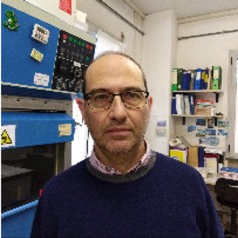Microbial Biofilms and Antibiofilm Agents 3.0
A special issue of International Journal of Molecular Sciences (ISSN 1422-0067). This special issue belongs to the section "Molecular Microbiology".
Deadline for manuscript submissions: closed (30 April 2023) | Viewed by 17248
Special Issue Editors
Interests: biofilm; biofilm-associated infections; antimicrobial peptides; new antimicrobial agents; host–pathogen interactions; virulence factors; Pseudomonas aeruginosa; Staphylococcus aureus
Special Issues, Collections and Topics in MDPI journals
Interests: macrophage; bacteria; flow cytometry; immunology of infectious diseases; innate immunity; cell culture; immunity; antimicrobials; cytokines; infection
Special Issues, Collections and Topics in MDPI journals
Interests: antimicrobial peptides; bacterial cells; antimicrobials; antibacterial activity; antibiotics; antibacterials; biofilm formation; bacterial antibiotic resistance; quorum sensing; bacteriocins
Special Issues, Collections and Topics in MDPI journals
Special Issue Information
Dear Colleagues,
Although the intense basic research on biofilms that has been carried out in recent decades has improved our capacity to design original and efficient therapeutic approaches to specifically target biofilm-related infections, most of these approaches are still at a developmental stage, and treatment of biofilm infections currently represents a challenging task for microbiologists and clinicians. Several mechanisms are responsible for the recalcitrance of biofilms to conventional antimicrobial treatments. These include, among others, reduced diffusion or sequestration of antibiotics through biofilm layers, generation of subsets of persistent bacteria, elevated rate of exchange of mobile genetic elements carrying resistance determinants, and establishment of environmental niches unfavorable to antibiotic action. To increase the translational potential of novel antibiofilm approaches, much work still needs to be done. For instance, even if in vitro biofilm susceptibility testing is a mandatory first step in evaluating new antibiofilm agents, molecules identified in vitro should be validated in models mimicking, as much as possible, in vivo physiological conditions and tested also for pharmacokinetics and absence of toxicity. Moreover, the increasing awareness of the polymicrobial nature of biofilms should lead to the development of dedicated approaches to study bacteria–bacteria or bacteria–fungi interactions and their consequences on biofilm pathogenesis or tolerance towards antibiotics.
This Special issue aims to gather a collection of papers focused on biofilm infections and new strategies to target them, with special interest at the molecular mechanisms involved in antibiofilm action. We hope that this Special issue may contribute to disclose new promising approaches that could improve our ability to prevent or eradicate bacterial biofilms in medical settings.
Prof. Dr. Giovanna Batoni
Dr. Semih Esin
Dr. Giuseppantonio Maisetta
Guest Editors
Manuscript Submission Information
Manuscripts should be submitted online at www.mdpi.com by registering and logging in to this website. Once you are registered, click here to go to the submission form. Manuscripts can be submitted until the deadline. All submissions that pass pre-check are peer-reviewed. Accepted papers will be published continuously in the journal (as soon as accepted) and will be listed together on the special issue website. Research articles, review articles as well as short communications are invited. For planned papers, a title and short abstract (about 100 words) can be sent to the Editorial Office for announcement on this website.
Submitted manuscripts should not have been published previously, nor be under consideration for publication elsewhere (except conference proceedings papers). All manuscripts are thoroughly refereed through a single-blind peer-review process. A guide for authors and other relevant information for submission of manuscripts is available on the Instructions for Authors page. International Journal of Molecular Sciences is an international peer-reviewed open access semimonthly journal published by MDPI.
Please visit the Instructions for Authors page before submitting a manuscript. There is an Article Processing Charge (APC) for publication in this open access journal. For details about the APC please see here. Submitted papers should be well formatted and use good English. Authors may use MDPI's English editing service prior to publication or during author revisions.
Keywords
- biofilm
- antibiofilm agents
- antibiofilm strategies
- antiadhesive materials
- biofilm-related infections
- quorum sensing
- persisters
- ex vivo models
- in vivo models
- wound infections
- lung infections








